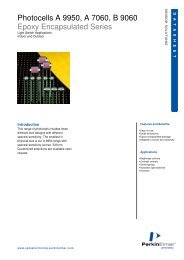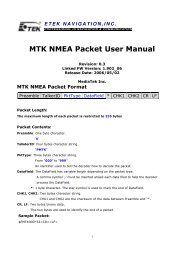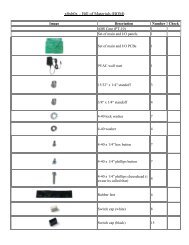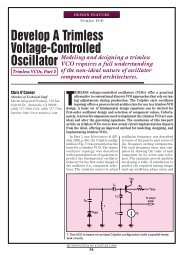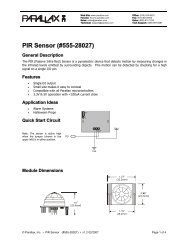Microstrip Patch Antennas for Broadband Indoor Wireless Systems ...
Microstrip Patch Antennas for Broadband Indoor Wireless Systems ...
Microstrip Patch Antennas for Broadband Indoor Wireless Systems ...
You also want an ePaper? Increase the reach of your titles
YUMPU automatically turns print PDFs into web optimized ePapers that Google loves.
4.0 DESIGN METHODOLOGY<br />
In order to reach the primary goal of manufacturing broadband patch antennas the project<br />
was split into subtasks, which allowed <strong>for</strong> achievable short-term goals. After the initial<br />
research regarding microstrip antennas specific work needed to be done. The flow chart<br />
(fig 6) explains the process.<br />
Research<br />
Determining substrate<br />
permittivity<br />
Design feed impedance<br />
matched narrowband patch<br />
Investigate possible broad<br />
band techniques<br />
Design two broadband<br />
patches<br />
Benchmark against<br />
commercial broadband<br />
product<br />
Fig 6: Design Methodology<br />
During phase 1 of the project, we used the resonant line method to calculate the<br />
permittivity of the G10 fiberglass substrate. This process had to be carried several times<br />
to reach accuracy, as each new batch of substrates has slightly different permittivity.<br />
Using accurate permittivity values and the equations given in the book “<strong>Microstrip</strong> <strong>Patch</strong><br />
Antenna” [1], the narrowband rectangular patch was designed. Phase one also oversaw<br />
the introduction of copper tapes to manufacture patches. Phase two involved in-depth<br />
technical research regarding possible broadband techniques. The best scheme was chosen<br />
based on manufacturing simplicity without compromising per<strong>for</strong>mance over the<br />
frequency band concerned. Two broadband patches were produced during this phase;<br />
both the patches were thoroughly tested <strong>for</strong> bandwidth (BW) and tuned to best match the<br />
input impedance. Phase 3 observed the field per<strong>for</strong>mance and area coverage<br />
measurements. Path loss was measured <strong>for</strong> both antennas and compared to the<br />
commercial broadband antenna.<br />
7




